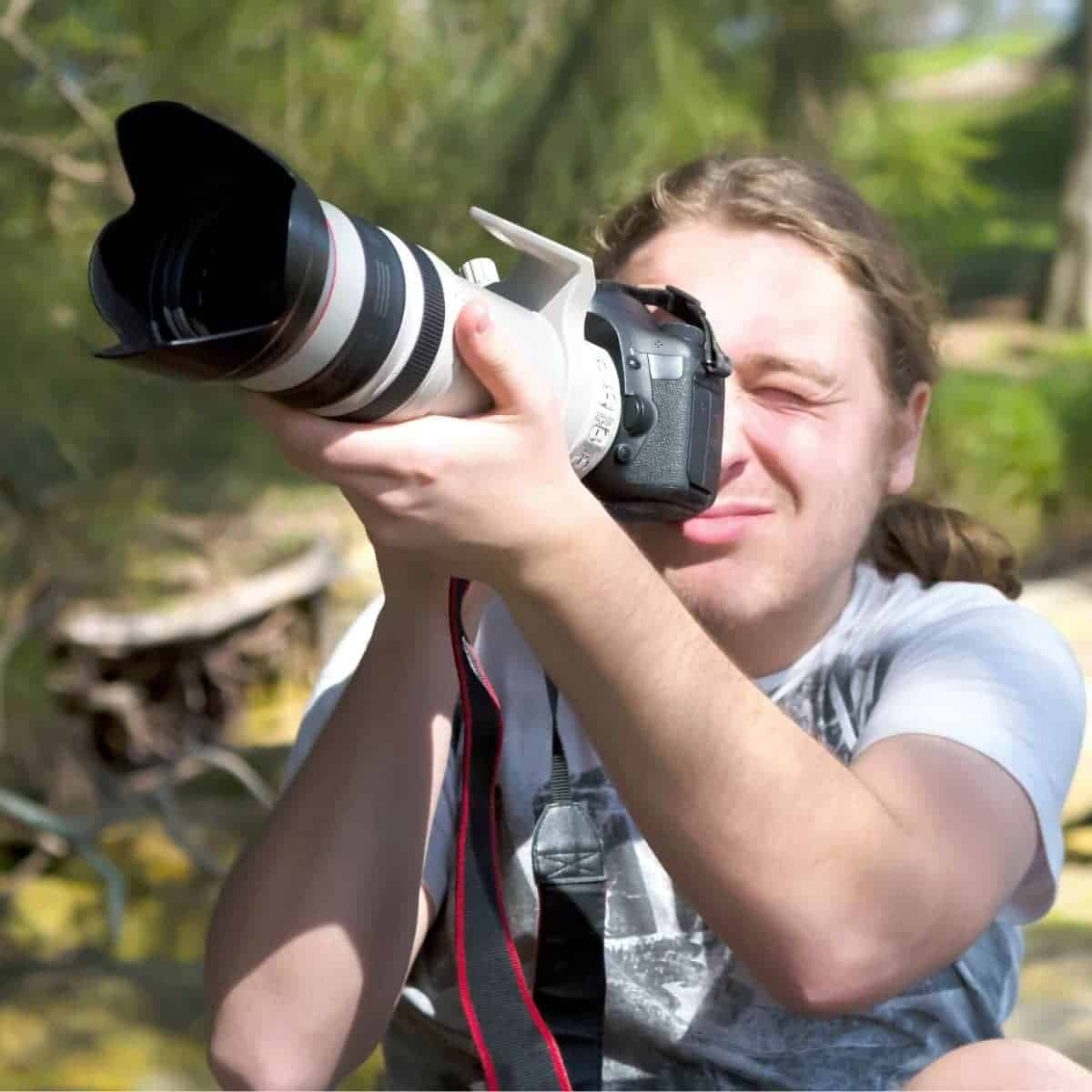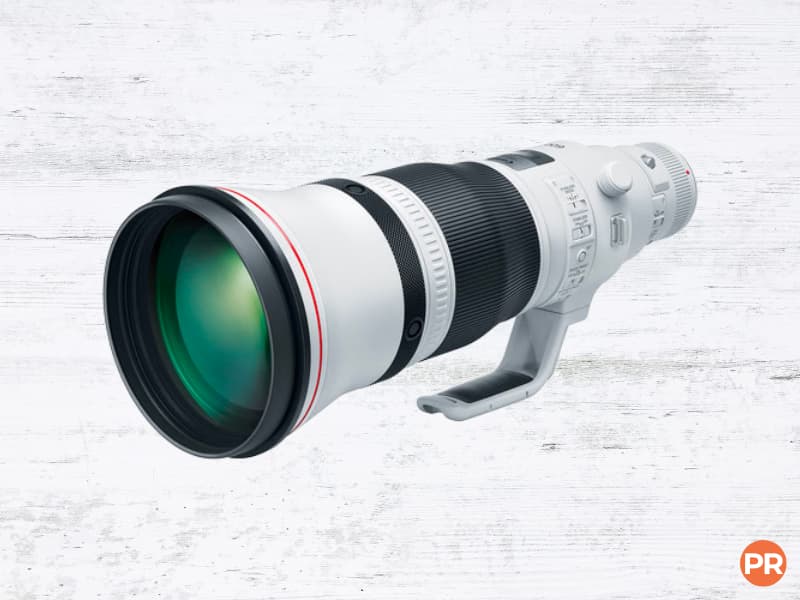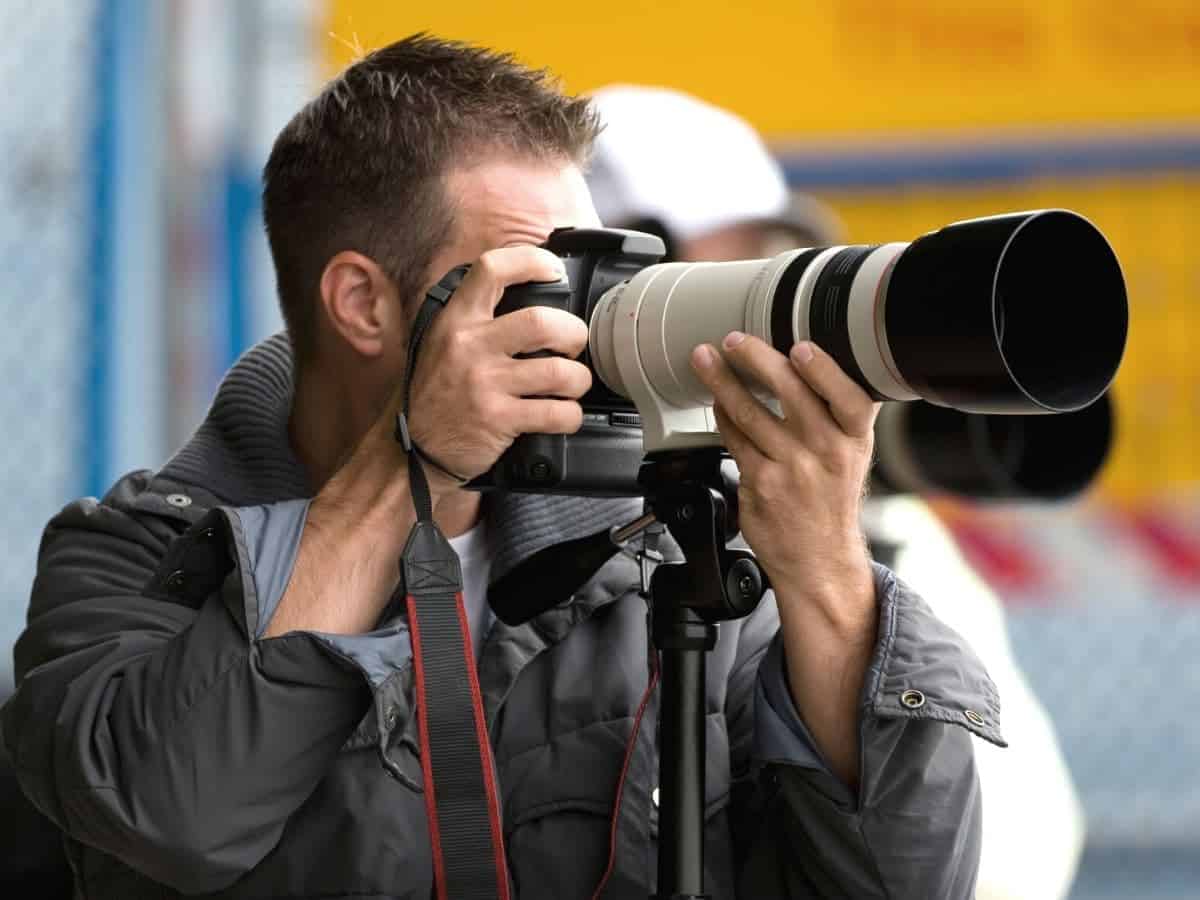A telephoto lens is a long-focus lens allowing you to make objects appear closer. Learn about the different ranges, costs, and why you need one.

Telephoto lenses make subjects appear closer than they are in reality.
Wildlife photographers use them to capture beautiful close-up shots of animals.
Landscape, product, and portrait photographers also enjoy telephoto lenses.
The telephoto lens dates back to 1891. John Dallmeyer and Adolphe Miethe are the two people responsible for discovering it.
The following covers everything you need to know about a telephoto lens. You’ll also learn tips about choosing and using one.
What’s a telephoto lens?

The majority of telephoto lenses have a long focal length. But that’s not what makes it one.
What makes a lens telephoto is that its physical length is shorter than the focal length.
An example is the Canon EF 600mm f/4L IS III USM lens.
It’s 17.64 inches long, while the focal length is 23.62 inches after converting it from millimeters.
Another aspect of a telephoto lens is the angle of view. It has an angle of view of 35 to 10 degrees.
Anything less than 10 degrees is a super-telephoto lens.
Most photographers and lens manufacturers consider telephoto to be any lens with a focal length beyond 80mm.
The long focal lengths are excellent for bringing distant subjects closer.
When to use a telephoto lens
The purpose of a telephoto lens is to make a subject or scene appear closer. You can also fill the frame with a distant subject.
All types of photographers use telephoto lenses. So, it’s an excellent lens to have in your camera bag.
The main reason to use a telephoto lens is to bring a subject or scene closer without moving.
The lenses are ideal for wildlife, landscapes, sports, street, and wedding photography.
In portrait photography, telephoto lenses offer beautiful compression and blurry backgrounds.
It captures a narrow field of view and separates your subject from the elements behind them.
The compression creates flattering portraits without distortion.
So, your subject will look natural and have a beautiful background with bokeh.
Another scenario to use a telephoto lens is for capturing stunning detail shots.
Regardless of the subject or scene, it allows you to magnify the details.
It shows the beauty and uniqueness that wider lenses are unable to capture.
There are many scenarios for using a telephoto lens. It’s a lens that will get lots of use.
The following are telephoto lenses and the type of photography best for the focal length:
- 70-200mm zoom lens: Portraits, weddings, landscapes, cityscapes, wildlife, and sports.
- 85mm prime lens: Portraits and weddings.
- 100-400mm zoom lens: Landscapes, wildlife, and sports.
- 135mm prime lens: Portraits, weddings, landscapes, wildlife, and sports.
- 200-500mm or 150-600mm zoom lens: Weddings, landscapes, sports, and wildlife.
- 500mm or longer prime lens: Landscapes, sports, and wildlife.
Types of telephoto lenses

Telephoto lenses range from medium to super telephoto. The following are the focal lengths in the three categories:
- Medium telephoto: 70mm to 135mm.
- Telephoto: 135mm to 300mm.
- Super telephoto: Over 300mm.
You can get prime or zoom telephoto lenses. The one you choose depends on how you plan to use it.
If you want versatility, get a zoom lens. If you know your ideal focal length, get a prime lens.
Another factor to consider is the aperture. You can shoot in lower light conditions and get faster performance with a wide aperture.
The drawback is that wider maximum apertures are more expensive.
When choosing a telephoto lens, keep in mind that it changes your camera’s field of view.
An excellent example is comparing a 100mm with an 800mm lens.
The 100mm lens may have an angle of view of 24 degrees, while the 800mm may have an angle of view of 3 degrees.
Super telephoto lenses are too heavy for handheld shooting.
Even with image stabilization, you need a tripod to support the weight and stabilize the lens.
Frequently asked questions about telephoto lenses
What’s the difference between a zoom and a telephoto lens?
A zoom lens is any lens with an adjustable focal length. It can be a wide-angle, standard range, or telephoto zoom lens. A telephoto lens is a lens that’s shorter than its focal length. Telephoto lenses often have focal lengths of 80mm longer. So, telephoto and zoom are not interchangeable terms.
Why are telephoto lenses so expensive?
Telephoto lenses are expensive due to the glass, elements, quality, and production costs. Also, many manufacturers include image stabilization to avoid camera shake. Aside from the higher cost of production, the company also must profit after expenses.
Why are my telephoto images blurry?
The long focal length and heavier lens make it easier to capture blurry images. The solution is to use a faster shutter speed to avoid camera shake. Cameras and lenses with image stabilization are also helpful.
Is a telephoto lens worth it?
While a telephoto lens can be expensive, heavy, and large, it’s worth the investment. The telephoto design allows a lens to be shorter than the focal length. It’s excellent for taking pictures of faraway subjects without moving. It makes them look closer than they are in reality. You can keep more distance between yourself and the subject.
What are the disadvantages of a telephoto lens?
The main drawbacks of a telephoto lens are the high price tag, heavier weight, and bulky feel. You may also need a tripod to stabilize and balance the lens.
Conclusion
The ability to capture flattering portraits without distortion, getting a close-up shot of something far away, and great picture quality are all examples of what a good telephoto lens can provide.
The bottom line is that a telephoto lens will help take your photos to the next level. It’s worth the investment.
Related: The Holy Trinity of Lenses (3 Lenses Every Photographer Needs)
Featured image courtesy of Canva.

